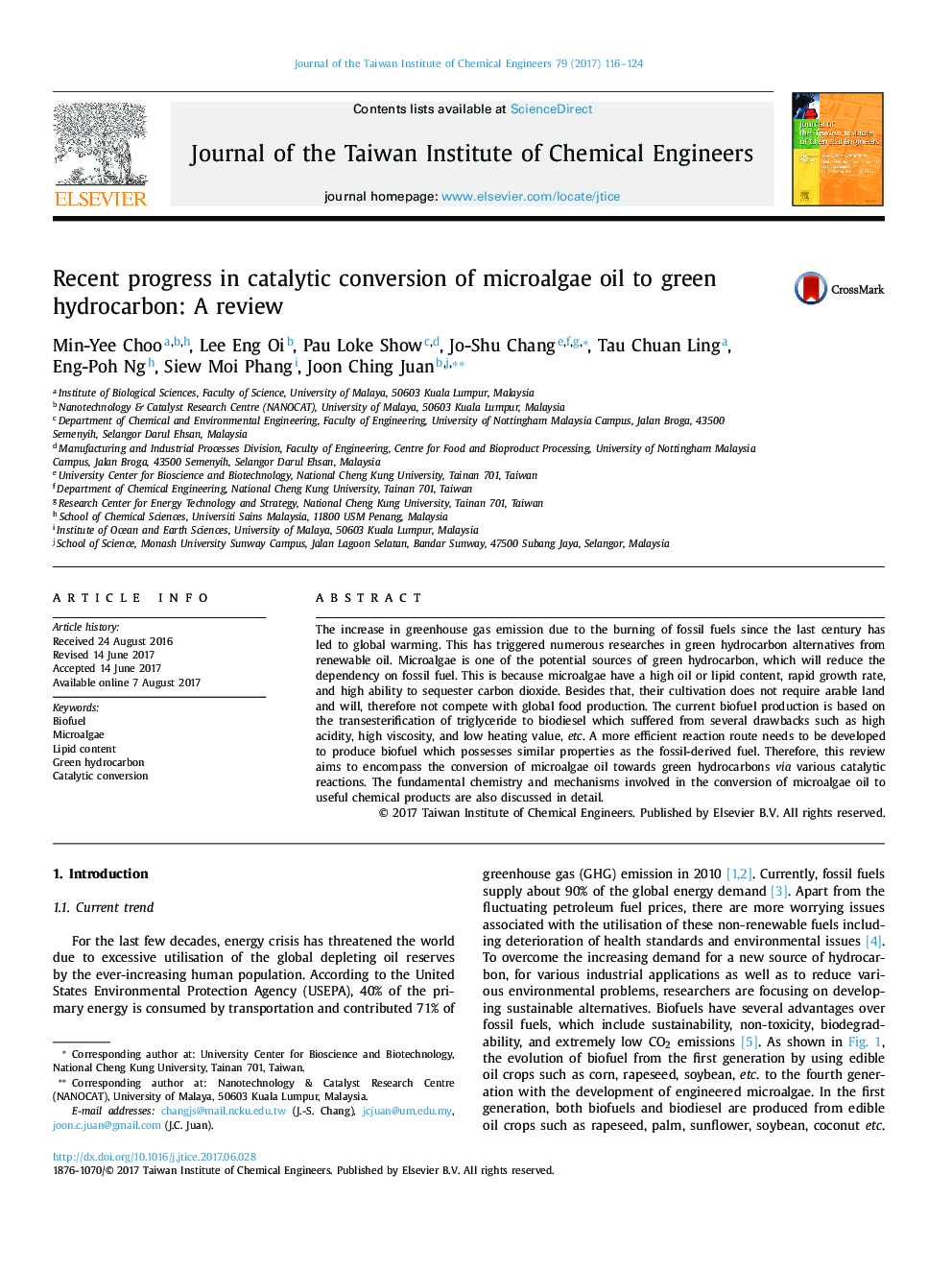| Article ID | Journal | Published Year | Pages | File Type |
|---|---|---|---|---|
| 4998546 | Journal of the Taiwan Institute of Chemical Engineers | 2017 | 9 Pages |
â¢Feasibility of microalgae based biofuel as fossil fuel substitute.â¢Catalytic conversion of microalgae oil to green hydrocarbon is reviewed.â¢Factors affecting the production of green hydrocarbon are discussed.â¢Fundamental chemistry and mechanisms involved are elucidated.
The increase in greenhouse gas emission due to the burning of fossil fuels since the last century has led to global warming. This has triggered numerous researches in green hydrocarbon alternatives from renewable oil. Microalgae is one of the potential sources of green hydrocarbon, which will reduce the dependency on fossil fuel. This is because microalgae have a high oil or lipid content, rapid growth rate, and high ability to sequester carbon dioxide. Besides that, their cultivation does not require arable land and will, therefore not compete with global food production. The current biofuel production is based on the transesterification of triglyceride to biodiesel which suffered from several drawbacks such as high acidity, high viscosity, and low heating value, etc. A more efficient reaction route needs to be developed to produce biofuel which possesses similar properties as the fossil-derived fuel. Therefore, this review aims to encompass the conversion of microalgae oil towards green hydrocarbons via various catalytic reactions. The fundamental chemistry and mechanisms involved in the conversion of microalgae oil to useful chemical products are also discussed in detail.
Graphical abstractDownload high-res image (125KB)Download full-size image
